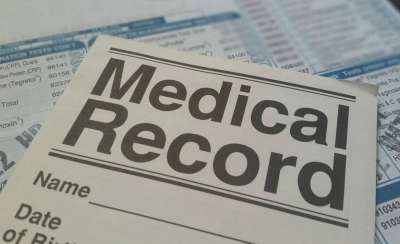WALTER REED NATIONAL MILITARY MEDICAL CENTER
Patient Medical Record
Patient name: Constitution, U. S.
DOB: September 17, 1787
Place of birth: Philadelphia, Pennsylvania
Location: Intensive care unit
 The patient is old and frail and presented with a number of serious ailments. The fact that the patient is well over 200 years old is remarkable but it appears that it may not survive much longer.
The patient is old and frail and presented with a number of serious ailments. The fact that the patient is well over 200 years old is remarkable but it appears that it may not survive much longer.
The most apparent sickness has been found in Constitution’s first amendment. Apparently the patient’s immune system has weakened to the point where executive attacks on its guarantee of free speech and a free press can no longer be defended against.
Constitution’s second amendment is also in poor shape. What was initially a limited right to bear arms has been inexplicably expanded again and again so that the patient now suffers from an acute inability to regulate and curtail the use of all manner of weapons.
A thorough examination of Constitution revealed evidence of some previous medical errors being inflicted on the patient. For example, it was seriously harmed by something called prohibition via its eighteenth amendment although luckily that was subsequently rectified by a twenty-first amendment.
Some past medical procedures appeared to have strengthened the patient’s Constitution such as the right to vote irrespective of race or sex (amendments fifteen and nineteen) and to directly elect senators (amendment seventeen). But little has been done to take further remedial steps in recent decades as evidenced by the shredded remains of a failed procedure called the equal rights amendment.
Instead, Constitution has been threatened with the possibility of harmful amendments to prohibit gay marriage, outlaw abortion, allow school prayer and insist on a balanced federal budget. The various attacks on Constitution’s corpus have weakened it so much that recently a Mr. West even urged the amputation of its thirteenth amendment in order to reinstate the possibility of slavery.
A detailed examination of the patient’s body politic revealed a serious growth in clause 2 of section 2 of its article 2, namely a slow-growing cancer that has been eating away at the appointment process of its Supreme Court. What was once a fairly civilized practice of advice and consent by the Senate requiring at least sixty affirmative votes has deteriorated into a highly partisan procedure.
Checking the patient’s medical history over the last fifty years reveals that a virulent judicial interpretative strain called originalism has infected the Court. This nasty bug has severely hampered Constitution’s ability to grow and change over time in order to adapt to new circumstances that were unimaginable 230 years ago.
In recent years, it appears that Constitution’s executive powers have grown appreciably beyond what was intended and have possibly metastasized into a national tumor. The current executive has become a cancer upon the patient who has been so weakened that it cannot exercise its inherent self-protective powers to impeach under article 2, section 4 or to remove under amendment 25.
Sadly, it appears that one major contributor to Constitution’s ill health is a congenital disorder called the Electoral College which was there at birth in the form of clauses 2, 3 and 4 of section 1 of article 2. This birth defect has apparently been exacerbated by such contagions as voter suppression and gerrymandering. In the patient’s five previous executive elections, two were won without a majority or even a plurality of the popular vote.
In the past, the patient suffered through many trials and tribulations and it was common for political doctors to say that Constitution had an inner strength and balance that allowed it to always pull through. Presently the patient is in the intensive care unit and its prognosis is uncertain. After we run some additional Congressional tests and surveys, we may have a better picture of Constitution’s possible recovery.
- The Proud Boys’ Letter to President Trump - January 8, 2021
- Betting on Trump - January 6, 2021
- Melania Trump’s Christmas Letter - December 23, 2020

